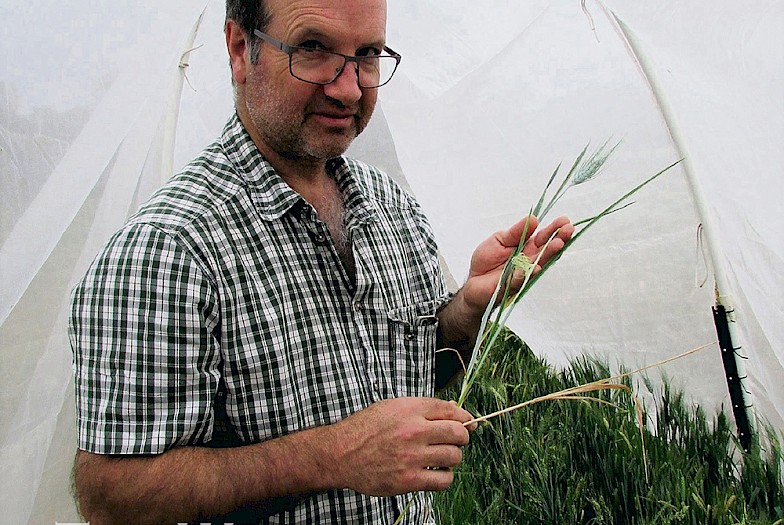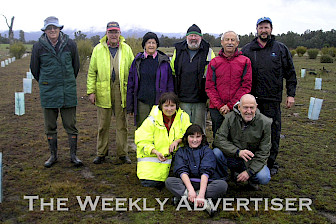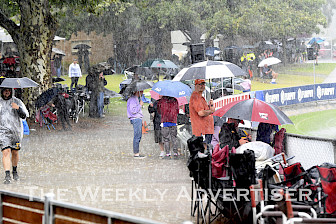Growers and advisers in areas such as the southern Mallee and East Gippsland, as well as NSW’s Riverina, Central West Slopes and Plains and Central Tablelands, have reported rare cases of RWA presence and symptoms, below intervention thresholds, this year.
Entomologists involved in GRDC research projects said an economically significant yield impact was more likely from infestations that occurred before stem elongation, but only if these persisted during the later heading and flowering stages.
South Australian Research and Development Institute, SARDI, entomologist Maarten van Helden said detecting RWA in crops was not difficult because infestations were usually obvious.
“A tell-tale sign is white or purple leaf streaking in cereal crops. And at late tillering and during stem elongation, leaf rolling might occur,” he said.
He said growers should search for aphids by peeling back rolled leaves.
Symptomatic tillers did not always contain aphids and therefore treatment might not be required if the aphids had either moved on or died.
First identified in Australia in 2016, RWA is now present in many cropping areas of SA, Victoria, Tasmania and NSW. The aphid has not been detected in Western Australia, the Northern Territory and Queensland.
Authorities expect RWA distribution to move northwards again this year to northern NSW and possibly southern Queensland.
RWA has only been confirmed in Australia in recent years, which means there has been limited research under ‘local’ agro-climatic conditions and farming systems.
In response, a GRDC investment project called ‘Russian wheat aphid risk assessment and regional thresholds’, is investigating regional risks and management tactics.
SARDI is leading the research project in partnership with sustainable agriculture research organisation cesar.
Field trials involve a variety of farming systems.
The investment is based on an investigation into how RWA survives between winter cropping seasons.
Scientists consider this knowledge pivotal in determining the risk of infestation and potential damage ahead of each new cropping season, as well as aiding RWA management planning and development of cultural controls.
It is also seeking to determine regional production risks and economic thresholds that will guide growers in effective management.
“When the aphid was introduced into the United States in the 1980s, the Americans developed economic thresholds. We are determining whether those same thresholds are valid in Australia,” Dr van Helden said.
“Current threshold recommendations for chemical control, based on US research, are more than 20 percent of seedlings infested with aphids up to the start of tillering and 10 percent of tillers infested thereafter.”
Trial sites are in South Australia, Victoria, Tasmania and NSW to determine scientifically robust thresholds under varying Australian conditions.
Dr van Helden said trials had so far shown that a considerable amount of RWA population pressure was required before yield loss was incurred.
“Overall, yield loss in our trials has not been as high as expected when aphid numbers have largely been above the overseas threshold,” he said.
“It seems that the overseas thresholds are, at this stage, acceptable for affected Australian grain growing regions.
“Be aware that RWA seems to develop better on stressed plants, so in very dry conditions the risks might be somewhat higher.”
Further information on RWA management is available online at grdc.com.au/rwa-tacticsfuturecontrol.
Authorities are encouraging growers to report occurrences of RWA in known areas of distribution to the GRDC’s PestFacts services at bit.ly/2O3hoBj for south-east cropping areas.
People can report suspected infestations in previously unaffected regions to an Exotic Plant Pest Hotline on 1800 084 881.
The entire August 28, 2019 edition of The Weekly Advertiser is available online. READ IT HERE!
The entire August 28, 2019 edition of AgLife is available online. READ IT HERE!






